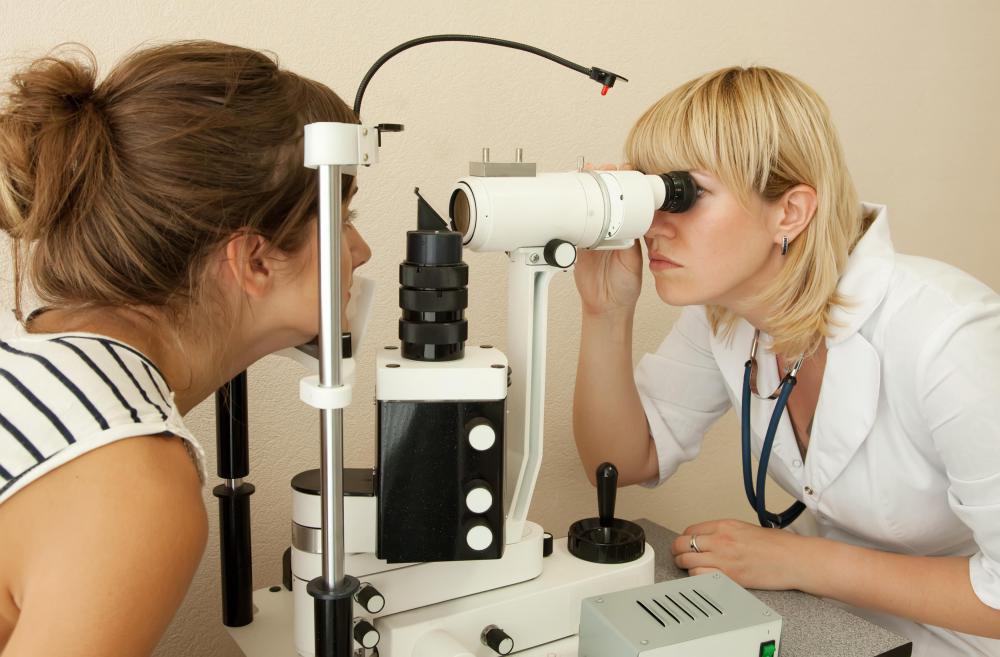At WiseGEEK, we're committed to delivering accurate, trustworthy information. Our expert-authored content is rigorously fact-checked and sourced from credible authorities. Discover how we uphold the highest standards in providing you with reliable knowledge.
How do I Choose the Best Retinal Detachment Treatment?
If you have suffered from retinal detachment, you have a few options for treatment, which can make it difficult to choose the best one for you. One of the most common types of retinal detachment treatment is scleral buckling, which works by denting the eye's surface enough to reduce tugging on the retina. This method is often combined with a vitrectomy, which takes the gel-like vitreous out of the eye completely so that it no longer bothers the retina. On the other hand, you may opt for pneumatic retinopexy, which is a retinal detachment treatment that injects a bubble into the eye, forcing the retina to reattach over time. If you have so far avoided complete retinal detachment, but still have a tear, you can choose between cryopexy and photocoagulation, which use extreme cold and heat, respectively.
One of the available retinal detachment treatments is called scleral buckling, which involves denting the eye's surface. This requires that the doctor attach a small bit of silicone rubber to the sclera, which is the white area of the eye, as this item will eventually place a dent in the surface. This can stop the vitreous, or fluid in the eye, from pulling on the retina, which will allow it to slowly reattach. In fact, in many cases, the vitreous is removed from the eye entirely, as is any nearby tissue that has been pulling on the retina. This is called a vitrectomy, and is usually combined with scleral buckling to create one available retinal detachment treatment.

Another type of treatment is pneumatic retinopexy, in which a bubble formed from any one of several gases may be is placed into the vitreous of the eye. The bubble gradually gets larger a few days after the retinal detachment treatment, eventually pressing against the retinal tear. This usually allows it to slowly reattach to the back area of the eyeball. The reattachment of the retina should only take days, but it may take months for you to regain any lost vision, if you can regain it at all. Of course, most of the time, this type of retinal detachment treatment is quite successful, allowing your vision to return to normal over time.

In some cases, the retina has not yet fully detached, which means that you have a few other treatment options in order to avoid full detachment. If you are suffering from a retinal tear, one of the most common options is photocoagulation, which uses a laser beam to burn the area surrounding the hole in the retina. This produces a scar that causes the retina to permanently attach to the tissue beneath it. Another option for retinal tears is cryopexy, which involves freezing the tissue that surrounds the hole. Like photocoagulation, this option results in a scar that fuses the retina to the wall of the eye so that it is unlikely to ever detach. Your eye doctor can usually help you weigh the pros and cons of all available options, and you may always consider getting a second opinion from another specialist if your are still not sure which is best.
AS FEATURED ON:
AS FEATURED ON:













Discuss this Article
Post your comments